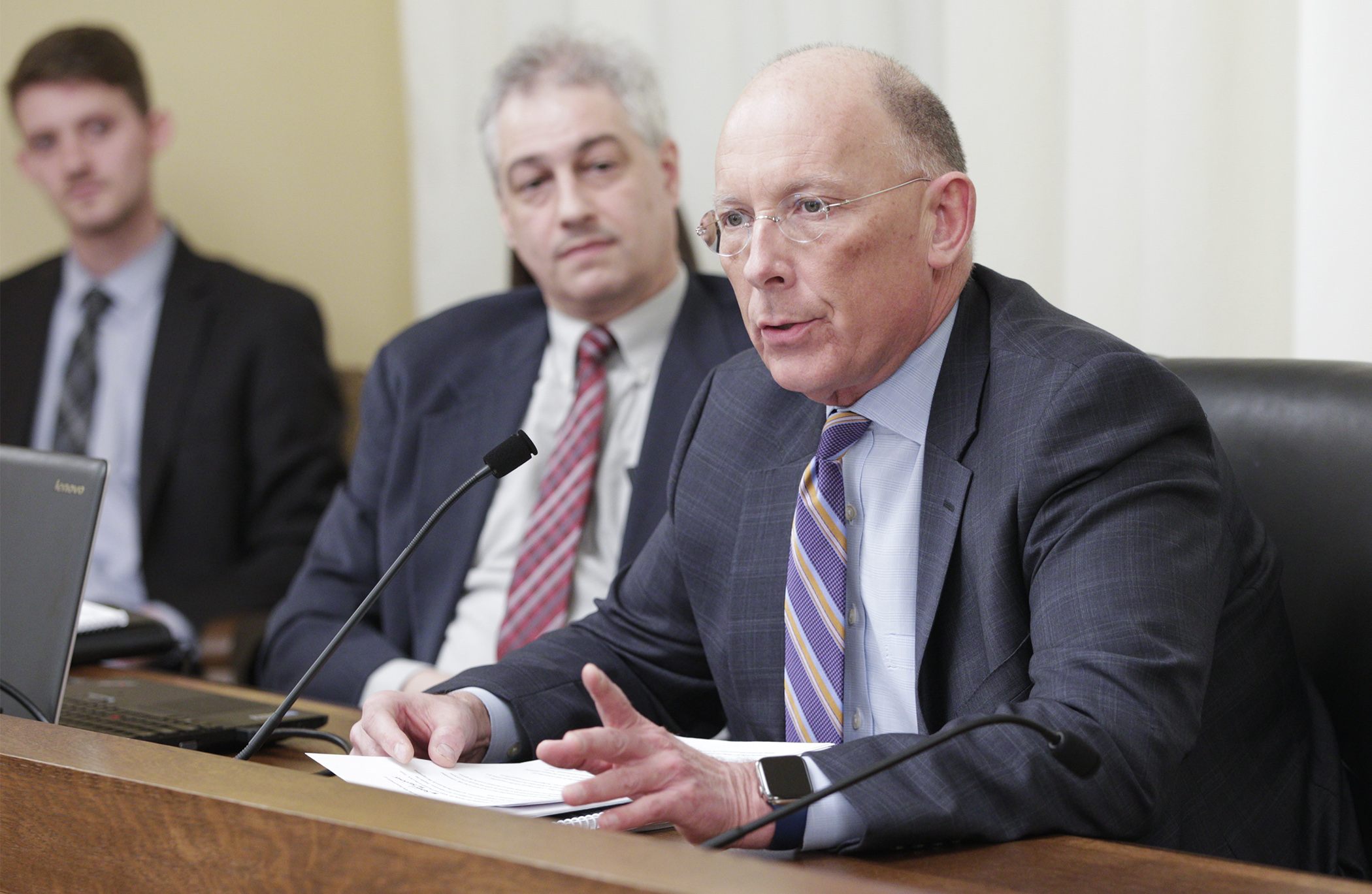Auditor's report: ‘Deeply troubling' problems plague state’s prison system

The state’s correctional system needs to take corrective action.
A report from the Office of the Legislative Auditor released Wednesday found that persistent staffing shortages, heavy overtime use, suspensions of prisoner activities, unprofessional workplace relationships, limited oversight, and outdated infrastructure significantly reduce safety for both prisoners and staff at the 11 state correctional facilities operated by the Department of Corrections.
OLA staff presented the report to a joint meeting of the House Public Safety and Criminal Justice Reform Finance and Policy Division and the House Corrections Division.
In a written response to the issues raised by the report, Corrections Commissioner Paul Schnell acknowledged the “deeply troubling realities pertaining to the safety of our facilities.”
In testimony to the divisions, a visibly contrite Schnell apologized several times for the shortcomings in the prison system, saying he and his department are committed to taking corrective action.
Prison staff overworked, bullied, assaulted, and ignored
Of the many critical issues and problems identified in the report, lawmakers focused on three they said were the most critical and require immediate corrective action:
- at some prisons, sexual offenses against female staff by prisoners occur frequently, but are often ignored or downplayed by supervisors and coworkers;
- one in three prison staff said that bullying and harassment among staff is a problem at their prison; and
- chronic shortages of correctional officers and the increasing use of overtime at several prisons have affected the safety of prisoners and staff.
“We are at an absolute crisis at the DOC, we are at a breaking point,” said Rep. Marion O'Neill (R-Maple Lake).
O’Neill said she was particularly disturbed by a finding that female prison staff endure repeated sexual offenses by male prisoners – such as exposing genitals and public masturbating – without appropriate support from supervisors and colleagues.
She implored Schnell to institute a zero-tolerance policy to that behavior. “If you tolerate it, it will continue,” she said.
Schnell highlighted several initiatives the department has already taken to address problems, including:
- creating a comprehensive Strategic Plan to directly guide its work;
- establishing an Office of Professional Accountability;
- establishing an Office of Peer Support;
- overhauling new employee onboarding, training, and performance management;
- limiting the use of restrictive housing as the primary disciplinary tool; and
- deploying body-camera technology to increase the safety of staff and inmates.
Origins of the report: Violence against correctional officers
Recent events prompted legislators to look at prison safety and security, and led to calls for the report on operations. They include the death of Stillwater prison corrections officer Joseph Gomm in July 2018 at the hands of a prisoner, and later that year, the death of Oak Park Heights prison corrections officer Joseph Parise who suffered a medical emergency and died in the aftermath of responding to an assault.
The report noted that violence against prison staff peaked in 2018, and although it has slightly decreased since then, one in three prison staffers surveyed said that they feel less safe than they did a year earlier. At Oak Park Heights, the state’s maximum-security prison, the number is 55 percent.
To increase staff safety, the OLA recommends that the Department of Corrections redouble its efforts to hire more correctional officers to reduce the chronic labor shortage, which sometimes leads to correctional officers working shifts with insufficient staff to safely manage prisoners.
Forced overtime is also a problem facing the prison system, according to the report, which contributes to worker fatigue that reduces staff safety. The department paid out nearly $12.3 million for more than 262,000 hours of overtime in Fiscal Year 2019, nearly double the $6.9 million it spent for roughly 150,000 hours the year before.
Schnell said fixing chronic staff shortages is a high priority and that he expects pay raises in the newly signed labor agreement with the correctional officers union will help recruit and retain more prison staff.
Related Articles
Search Session Daily
Advanced Search OptionsPriority Dailies
Legislature — with budget incomplete — gavels out, prepares for special session
By Rob Hubbard Some years, state legislative sessions surge to a climax on their final day, a flurry of activity providing a sustained adrenaline rush, culminating in smiles of satisfaction as...
Some years, state legislative sessions surge to a climax on their final day, a flurry of activity providing a sustained adrenaline rush, culminating in smiles of satisfaction as...
Walz, lawmakers strike budget deal in session's final days
By Lisa Kaczke With five days to go in the 2025 session, three of four legislative leaders announced a budget agreement Thursday that would sunset unemployment insurance for hourly school empl...
With five days to go in the 2025 session, three of four legislative leaders announced a budget agreement Thursday that would sunset unemployment insurance for hourly school empl...